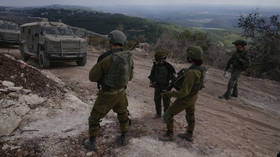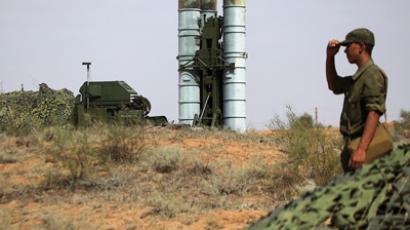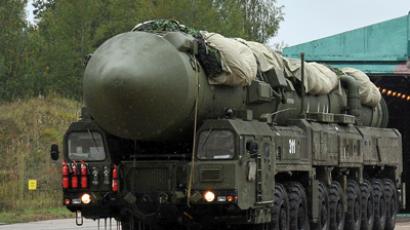US missile defense shield flawed – classified studies
The planned multibillion-dollar missile shield for Europe is flawed to a degree that it might never be able to fulfill its ostensible goal – protecting the US from Iranian missiles – secret Defense Department studies reveal.
The classified studies were outlined to lawmakers in a briefing by the non-partisan Government Accountability Office (GAO) which was obtained by the Associated Press.The four-phase shield, which would be based in select NATO member states and the Mediterranean Sea, would culminate in the deployment of SM-3 Block IIB interceptors. Those interceptors would theoretically protect America and Europe from InterContinental Ballistic Missile (ICBM) threats.But it is this fourth and final stage that has now come under scrutiny. The GAO investigators said that classified reports by the Missile Defense Agency concluded that Romania was a poor location for an interceptor to protect the US. It was also revealed that the Polish site would only work if the US developed capabilities to launch interceptors which could target an Iranian missile while in its short initial phase of powered flight.The White House has opted not to pursue that capability because it is not viewed to be feasible, said one senior defense official.The military has considered overcoming this flaw by deploying interceptors on ships in the North Sea instead. But apart from safety concerns cited by the US Navy, said interceptors would be directly in the firing line of Russian ICBMs, reinforcing Moscow’s claims that Russia, and not Iran, is the intended target of the system.“I don’t think it was ever intended to protect against Iranian missiles – something that in fact do not even exist today. Iran has no nuclear weapons, nor do they have capability to launch a missile all the way to the United States,” anti-nuclear campaigner Bruce Gagnon told RT.“So I think the so called missile defense system – which in fact is a key part of US first strike strategy. It’ the shield to be used after the sword has lunged into the heart of Russian and Chinese nuclear forces. And clearly this missile defense system has always been about surrounding Russia and China and that’s why math doesn’t work when you look at having it protect against an Iranian system,” he added.Previous reports by both the GAO and other advisory bodies have revealed other flaws in the shield, including production glitches, defects with radar systems incapable of distinguishing between warheads and other objects, and cost overruns. One report by the National Academy of Sciences had recommended scrapping the fourth phase of the system altogether, deploying the interceptors to the US East Coast instead.Considering the budgetary constraints of spending billions for a system which is potentially incapable of delivering as promised, the study could force Congress to reevaluate the efficacy and benefit of the system.The GAO investigators for their part criticized the Obama administration for not having the foresight to conduct such studies so that the problems could have been revealed at an earlier date.Military officials declined repeated requests by AP to discuss the study on record due to their classified nature. They were also not forthcoming about the accuracy of the GAO conclusions, though they have been reviewed by several Defense Department officials and the revisions they requested were incorporated.None of the officials contacted registered any objections to how the studies had been characterized.When President Barack Obama assumed office in 2009, his administration announced a reset in relations with Russia, which sought out areas for cooperation with Russia on a number of issues ranging from trade to arms control.Relations with Russia had chilled considerably during the George W. Bush administration, who initiated the plan to base long-range interceptors in Central Europe.Obama altered the plan soon after being sworn in, calling for slower interceptors that could neutralize Iran’s medium-range missiles.However, US and NATO intransigence on providing Moscow with legally-binding guarantees that the system will not be targeted against Russia have considerably soured the reset.Moscow fears the system is intended to counter its missiles and undermine its nuclear deterrent, despite Washington’s claims to the contrary.
The missile shield has little to do with Iran, and is simply being driven by the commercial interests of the American military industrial complex, Alice Slater, New York Director of the Nuclear Age Peace Foundation told RT.“We’ve had scientists saying for years that “Star Wars” couldn’t work, you couldn’t prevent an attack on the US, because if somebody wanted to get through with either a nuclear bomb or regular bomb, they could send hundreds of decoys, we couldn’t possibly stop everything coming through,” Slater explained.But despite the obvious, “the machine keeps grinding on,” sacrificing the relationship with Russia for a “world domination policy,” Slater said.














